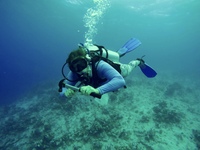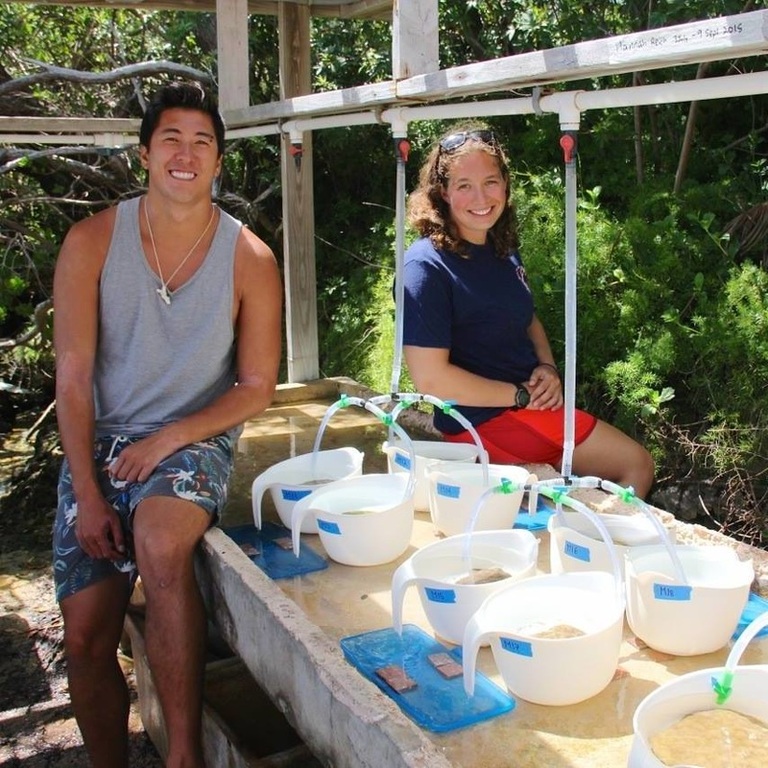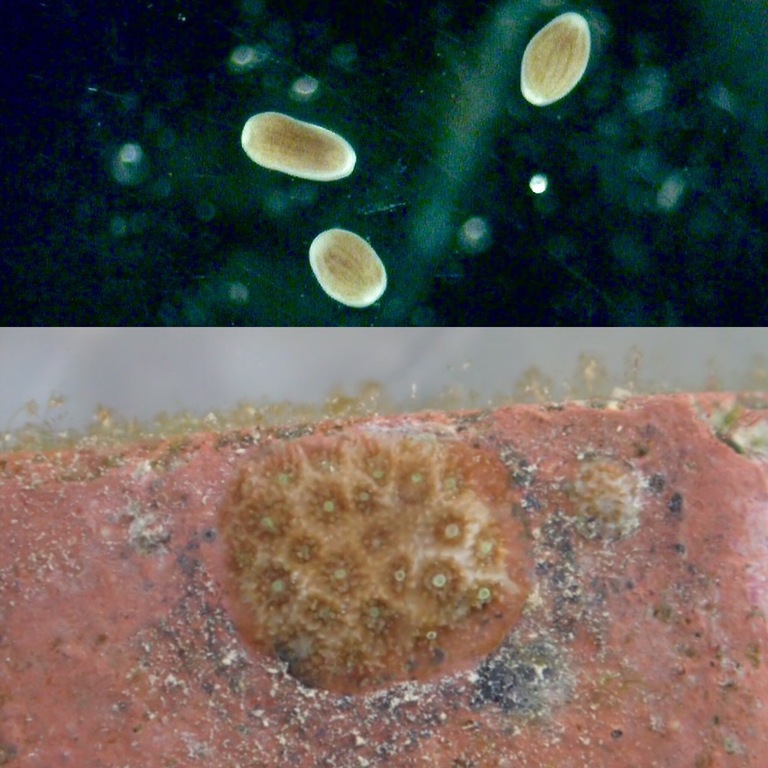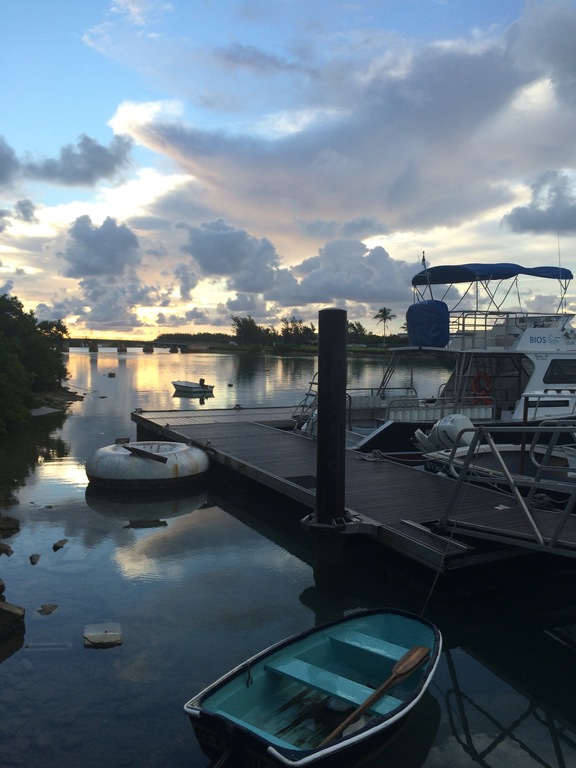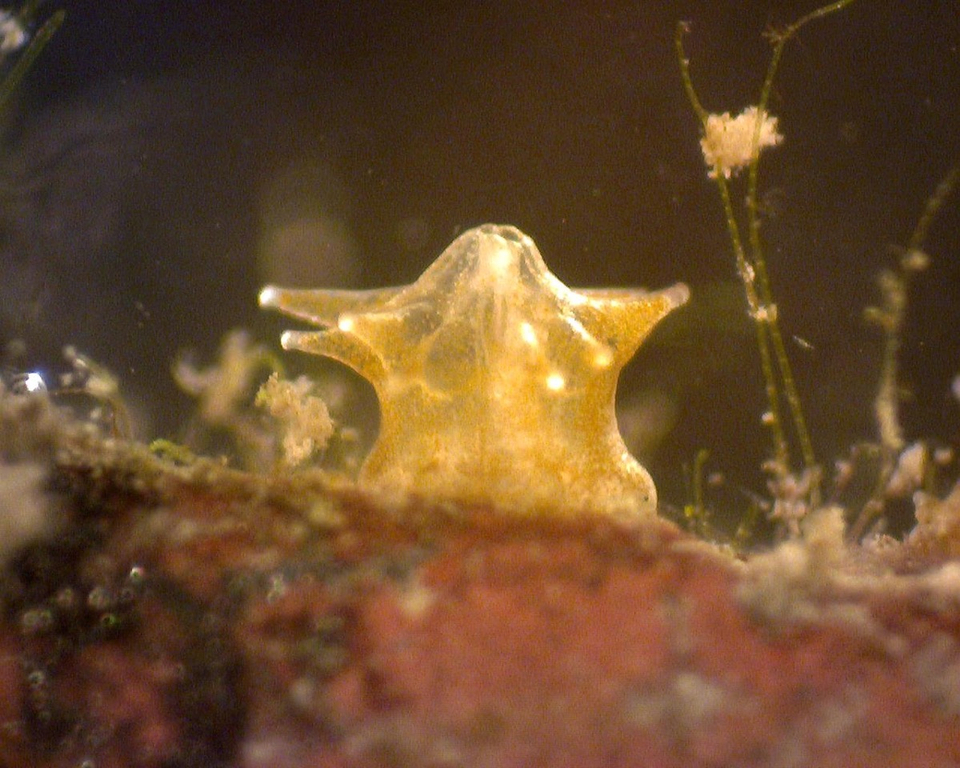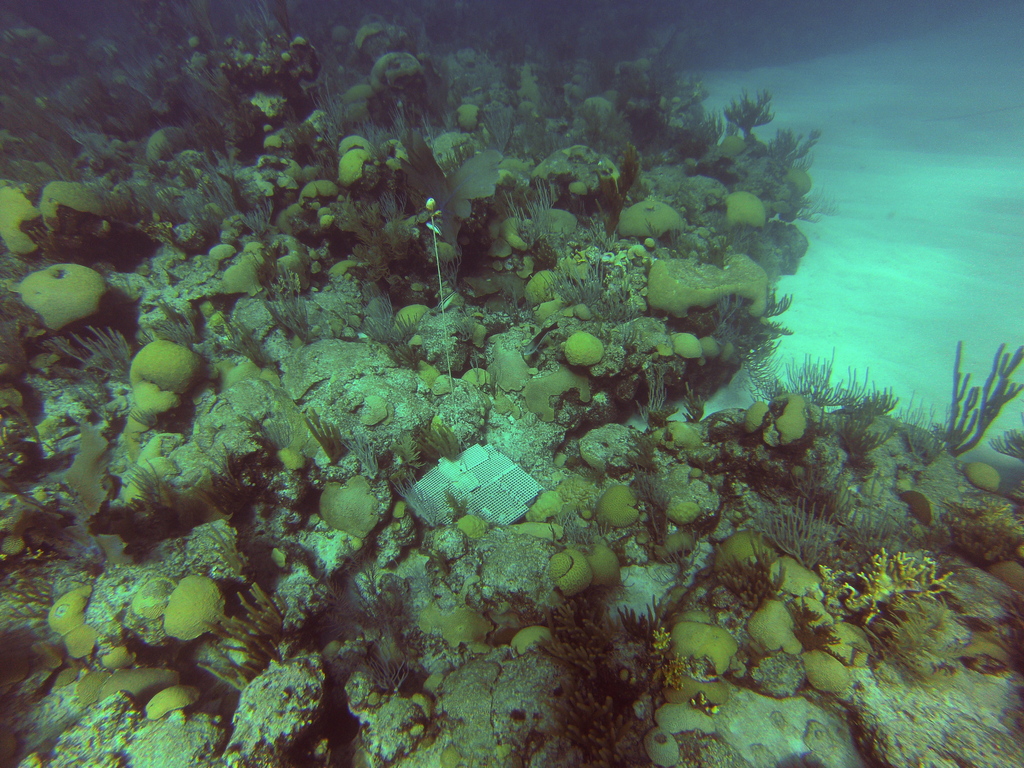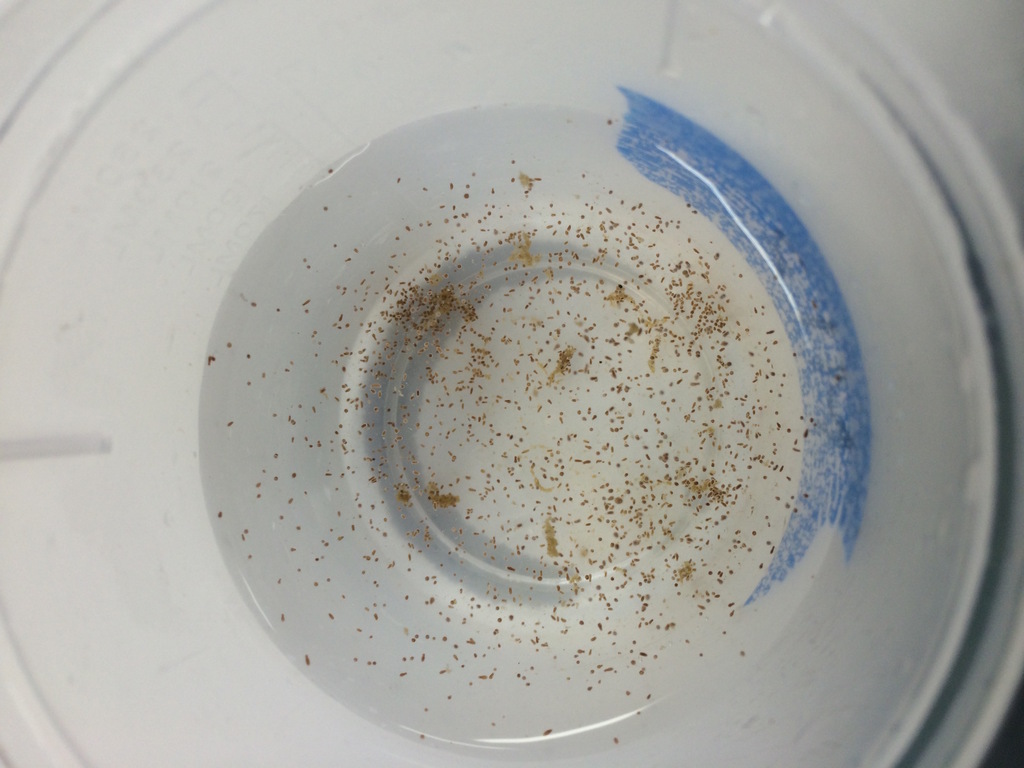Behind the science:
Do the shuffle: Changes in Symbiodinium consortia throughout juveni...
2018, February 5
Posted by Veronica Radice
Fields
Molecular ecology
Physiology
Focusgroups
Scleractinia (Hard Corals)
Symbiodinium (zooxanthellae)
Locations
Bermuda
Platforms
SCUBA (open-circuit or unspecified)
“Symbiodinium changes in juvenile coral development”
What was the most challenging aspect of your study (can be anything from field, lab to analysis)?
Monitoring the Porites astreoides planulation events (i.e., counting released planulae until we went cross-eyed)! They tended to keep us working through weekends and I would routinely see planulae as I fell asleep at night. I also had a few dreams where I threw corals back in the water to “stop” the planulation events.
What was the most memorable moment in undertaking this study?
This study represented the first collaboration between my former advisors at the Bermuda Institute of Ocean Sciences (Dr. Gretchen Goodbody-Gringley) and Clark University (Dr. Deborah Robertson). Some of my fondest moments as their advisee was when I got to spend time with both of them together. Fortunately, I was able to “book-end” this study with meetings where both were physically present (the initial planning meeting and my masters thesis defense). Both are excellent mentors and it was a joy to work with them! My “first” day of graduate school was spent with some labmates orchestrating alternative cleaning strategies to remove fleshy macroalgae from our coral tanks. We spent a whole day collecting chitons and other grazers from a nearby snorkel site so they could do the cleaning for us! This backfired the next morning when we found that the chitons had climbed out of the tanks and onto the ground. We subsequently spent hours prying them off the ground, scrubbing un-eaten algae off of tanks and settlement tiles, and laughing.
What was your favorite research site in this study and why?
Living and working at the Bermuda Institution of Ocean Sciences (BIOS) was a blast! My time at BIOS brought me close to many colleagues that I continue to see at conferences and build lifelong friendships with. Not to mention the nearby sunsets and Sunday Sundaes.
Other than your co-authors, with whom would you like to share credit for this work?
My fantastic labmates Kevin Wong and Kayley You Mak contributed substantially to this work. I am indebted to their assistance with coral husbandry, various field work tasks, editing, and unwavering moral support. Additionally, I thank my labmates from the Robertson Lab at Clark for help with trouble-shooting molecular work and their camaraderie. Last but not least, I thank those who work behind the scenes at BIOS and Clark for all they’ve done to help facilitate this work and productivity at these institutions.
Any important lessons learned (through mistakes, experience or methodological advances)?
When monitoring spawning/planulation events, always name the individual corals! It lightens the mood during the long hours of planulae counting. Example: “Bubbles set a new record and released 1,437 planulae last night!” On a more serious note, I learned the hard way about the importance of pacing yourself (particularly with molecular lab work and writing) and having work-life balance. Balance is key and a lack thereof can come back to bite you when it comes time to wrap things up and sprint to the end.
Can we expect any follow-up on this work?
Since transitioning to a PhD program at Penn State, my research focuses have evolved to characterizing iron stress in coral-algal symbiosis. However, keep an eye out for upcoming work out of the Goodbody-Gringley lab on the reproductive plasticity of shallow and mesophotic Porites astreoides in Bermuda and Kevin Wong’s dissertation on transgenerational plasticity in this system.
Featured article:
|
|
Do the shuffle: Changes in Symbiodinium consortia throughout juvenile coral development | article Reich HG, Robertson DL, Goodbody-Gringley G (2017) PLoS ONE 12:e0171768 |

|
